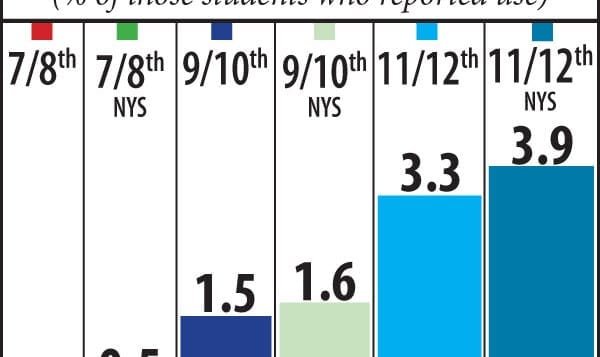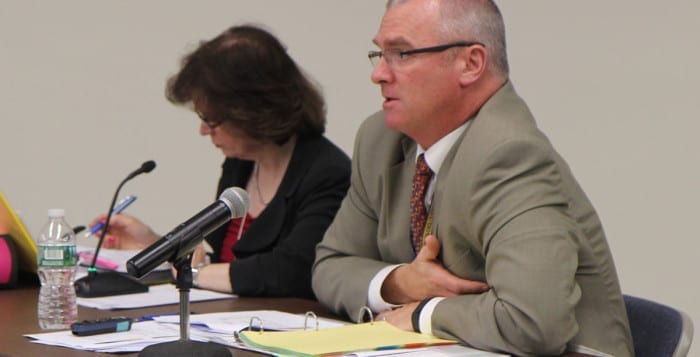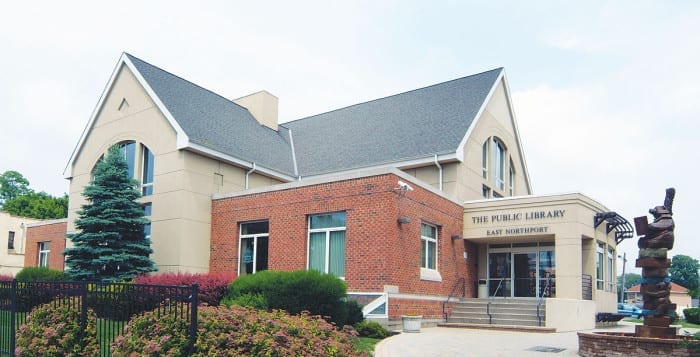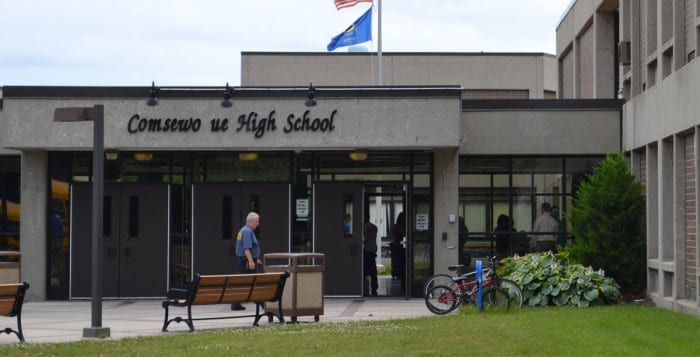Residents flooded the Rocky Point High School auditorium on Tuesday for a night of education on drugs and a chance to see what drug use is like in the district.
John Venza, vice president of Adolescent Services for Outreach, a New York-based organization that encourages community residents to seek help for substance abuse, and Suffolk County Senior Drug Abuse Educator Stephanie Sloan tackled drug education in the nearly two-hour forum.
Gateway drugs, drug use causes, the evolution of these substances and how parents and students alike can navigate through life without using drugs were among the topics discussed. The forum was also an opportunity to see results from the New York State-issued 2014-15 survey regarding youth development. Rocky Point was one of 10 school districts that took the survey, which examined drug use and prevalence in the district.
“Let’s face it, teenage years are tough enough to begin with, but then you have all this stuff added on — I wouldn’t want to go through [adolescence] again [now],” said Amy Agnesini, forum organizer and athletic director for Rocky Point.
Although drug use in Rocky Point’s seventh and eighth-graders falls below state average for alcohol and energy drinks — the most common substances used by this age group — the survey revealed the use of these two drugs in addition to chewing tobacco or using marijuana, cigarettes and pain relievers, among a few other drugs, increased in high school.
Town of Brookhaven Councilwoman Jane Bonner (C-Rocky Point) was among the speakers in attendance. Bonner announced her piece of legislation to ban hookah lounges, vape and smoke shops within 1,000 feet of various locations, including schools, non-degree granting schools, like a ballet or karate studio, religious facilities, hospitals and other areas. She added that there will be a public hearing on the ban proposal in the near future.
“This is a war — we are in the trenches as parents, as educators, as members of the community — we’re the ones battling,” said Rocky Point Superintendent of Schools Michael Ring. “The battle isn’t necessarily in the streets, the way a lot of people think it is … it’s in your living room.”
According to Venza, technology isn’t the only thing that’s evolved; drugs have as well. People can now use devices like vape pens to smoke different forms of marijuana, including a dab, a waxy substance with high concentrations of THC. Between 14 and 24-years-old is the worst time to smoke marijuana in a person’s life, Venza said during the forum. The potency of drugs, including marijuana, has also increased over the decades.
“Unlike 10, 20, 30, 40 years ago where you needed a needle, you no longer need a needle because [of the purity of the drugs],” Venza said about heroin needles. People can now sniff the drug and get high, which makes trying the drug less daunting, Venza added.

Hope House Ministries’ Opioid Overdose Prevention Program’s Clinical Director Dr. Jennifer Serrentino said 120 people die from drug overdose daily. Last year, there were around 100 fatal heroin overdoses in Suffolk County alone.
Although one resident voiced her concerns that the forum would give students more ideas on how and where to use drugs, the speakers and parents, like Sound Beach resident Sharon Ferraro, think knowledge is power.
“If you were at a party or at a friend’s house and you see that paraphernalia, that’s your trigger to get out,” Ferraro said to her daughter Molly Searight, after the resident posed the question.
Ferraro said she is very involved with her children, but that’s not the case for every family. She said some parents are busy and don’t always spend quality time with their children. Although Ferraro’s daughter Molly hasn’t seen students using drugs on campus, beyond electronic cigarettes or vape pens in the bathroom, she said she hears of drug use from peers. After the event, Molly said she’s more aware of the effects of alcohol on youth.
Residents and speakers alike, including the councilwoman, were not only pleased with the event’s turnout, but also the large volume of residents who were in attendance.
“I was so proud of the community that I live in, that it was standing room only,” Bonner said. “People [are] finally recognizing that you can’t bury your heads in the sand. Community forums like this one are integral to combatting this [drug use issue].”















